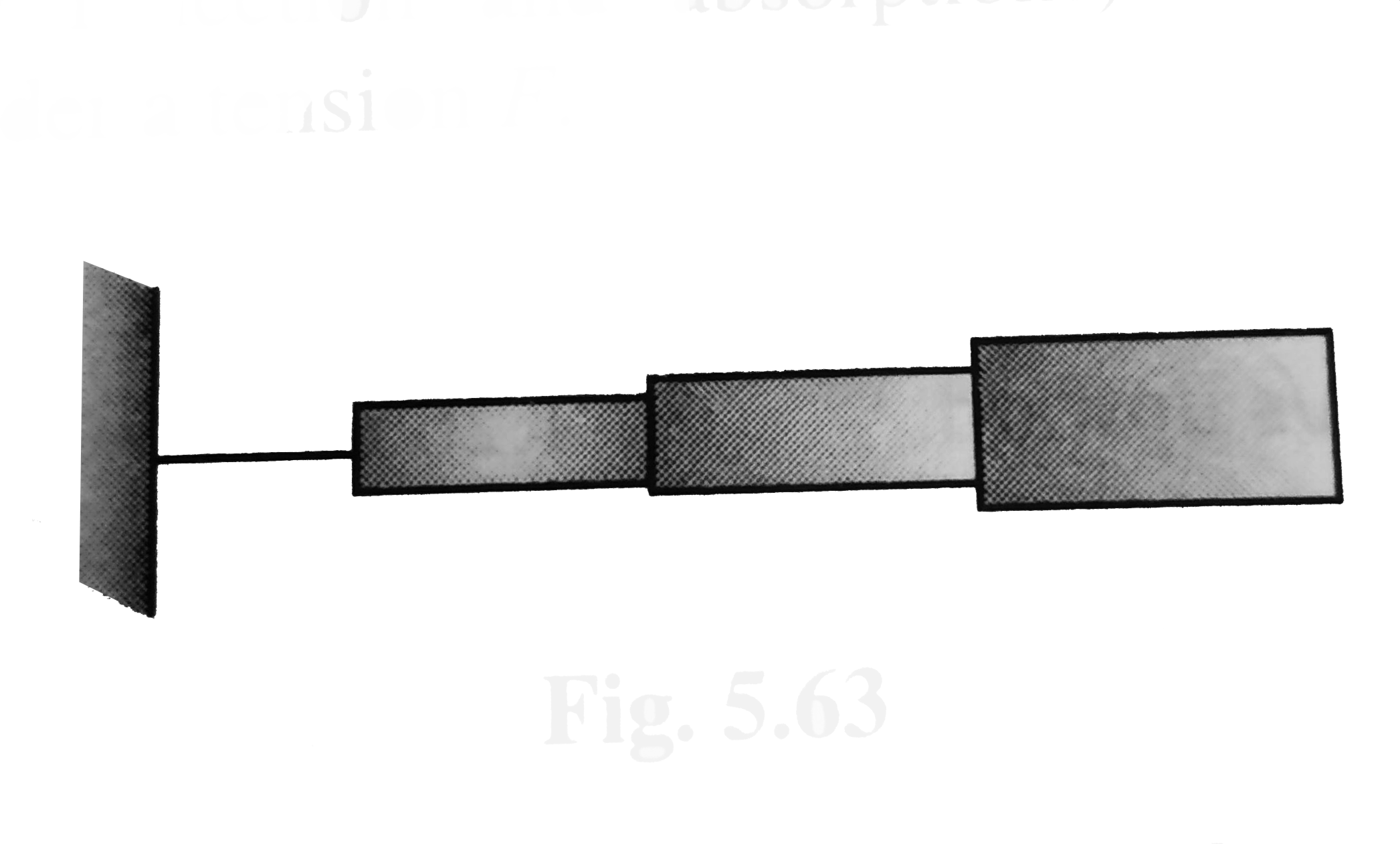What is the frequency of 9th overtone on a stretched string of length l and linear density 'm', when the tension is "T"?
To find the frequency of the 9th overtone on a stretched string of length l and linear density m when the tension is T, we can follow these steps:
Step 1: Understand the formula for overtone frequencies
The frequency of the p-th overtone on a stretched string is given by the formula:
fp=(p+1)2l√Tm
where:
- fp is the frequency of the p-th overtone,
- p is the overtone number,
- l is the length of the string,
- T is the tension in the string,
- m is the linear density of the string.
Step 2: Identify the overtone number
For the 9th overtone, we have:
p=9
Step 3: Substitute p into the formula
Now, substitute p=9 into the formula:
f9=(9+1)2l√Tm
Step 4: Simplify the expression
Calculating 9+1:
f9=102l√Tm
Now simplify 102:
f9=5l√Tm
Step 5: Write the final expression for the frequency
Thus, the frequency of the 9th overtone is:
f9=5l√Tm
Summary
The frequency of the 9th overtone on a stretched string of length l and linear density m when the tension is T is given by:
f9=5l√Tm
---
The frequency of the p-th overtone on a stretched string is given by the formula:
fp=(p+1)2l√Tm
where:
- fp is the frequency of the p-th overtone,
- p is the overtone number,
- l is the length of the string,
- T is the tension in the string,
- m is the linear density of the string.
For the 9th overtone, we have:
p=9
Now, substitute p=9 into the formula:
f9=(9+1)2l√Tm
Calculating 9+1:
f9=102l√Tm
Now simplify 102:
f9=5l√Tm
Thus, the frequency of the 9th overtone is:
f9=5l√Tm
The frequency of the 9th overtone on a stretched string of length l and linear density m when the tension is T is given by:
f9=5l√Tm
Topper's Solved these Questions
- BOOK - AAKASH SERIESCHAPTER - WAVE MOTION AND SOUNDEXERCISE - PROBLEMS (LEVEL - I)59videos
WAVE MOTION AND SOUND
- BOOK - AAKASH SERIESCHAPTER - WAVE MOTION AND SOUNDEXERCISE - PROBLEMS (LEVEL - II)97videos
WAVE MOTION AND SOUND
- BOOK - AAKASH SERIESCHAPTER - WAVE MOTION AND SOUNDEXERCISE - EXERCISE (SHORT ANSWER QUESTIONS)13videos
WAVE MOTION AND SOUND
- BOOK - AAKASH SERIESCHAPTER - WAVE MOTIONEXERCISE - PRACTICE SHEET ADVANCED (INTEGER TYPE QUESTIONS)10videos
WAVE MOTION
- BOOK - AAKASH SERIESCHAPTER - WAVE OPTICSEXERCISE - PROBLEMS (LEVEL - II)33videos
WAVE OPTICS
Similar Questions
How is the frequency of a stretched string related to:
Its tension?View SolutionHow is the frequency of a stretched string related to:
Its length?View SolutionCalculate the time taken for a disturbance to pass through a string of length I and of mass per unit length m when the tension in the string is mI2gN.
View SolutionThe frequency of the fourth harmonic in a stretched string of length 20 cm is 500 Hz. (i) Calculate the velocity of the wave in the string? (ii) For what value of tension, will the velocity in the string be 100 ms−1?
View SolutionThe frequency v of the stretched string may depend on (i) the length of the vibrating segment 1 (ii) the tension in the string and (iii) the mass per unit length m. Show that v∝1l√Fm.
View SolutionIf the speed of a transverse wave on a stretched string of length 1 m is 60ms−1, what is the fundamental frequency of vibration ?
View Solution(a) Distinguish between transverse wave and longitudinal wave. Give one example of each type.
(b) A stretched string of length I and under a tension T, emits a note of fundamental frequency n. The tension is now reduced to T/2 and the vibrating length changed so that the frequency of the second harmonic is equal to n. Find out the new length of the string in terms of its original length.View SolutionThe frequency (f) of a stretched string depends upen the tension F (dimensions of form ) of the string and the mass per unit length mu of string .Derive the formula for frequency
View SolutionFour pieces of string of length L are joined end to end to make a long string of length 4L. The linear mass density of the strings are μ,4μ,9μand16μ, respectively. One end of the combined string is tied to a fixed support and a transverse wave has been generated at the other end having frequency f (ignore any reflection and absorption). string has been stretched under a tension F. Find the time taken by wave to reach from source end to fixed end.

View SolutionA string of length 50cm and mass 12.5g is fixed at both ends. A pipe closed at one end has a length 85cm. When the string vibrates in its second overtone and the air column in the pipe in its first. Overtone, they produce a beats frquency of 6Hz. It is also observed that decreasing teh tension in the string decreaes beats frequency. Neglect the end correction in the pipe and velocity of sound in air is 340m/s. then the tension in the string is
View Solution

